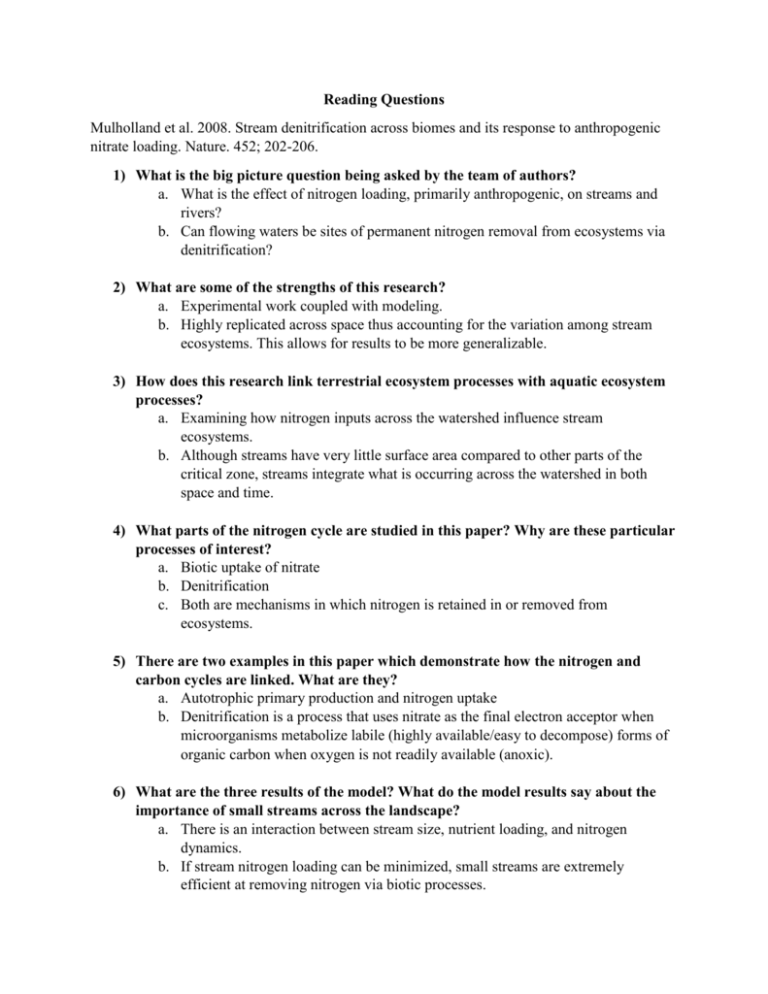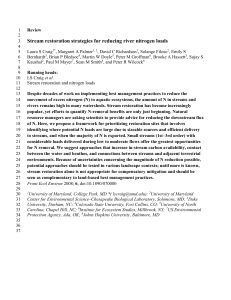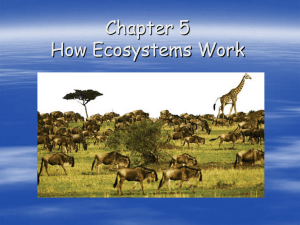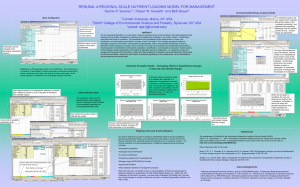Mulholland et al. Reading Questions
advertisement

Reading Questions Mulholland et al. 2008. Stream denitrification across biomes and its response to anthropogenic nitrate loading. Nature. 452; 202-206. 1) What is the big picture question being asked by the team of authors? a. What is the effect of nitrogen loading, primarily anthropogenic, on streams and rivers? b. Can flowing waters be sites of permanent nitrogen removal from ecosystems via denitrification? 2) What are some of the strengths of this research? a. Experimental work coupled with modeling. b. Highly replicated across space thus accounting for the variation among stream ecosystems. This allows for results to be more generalizable. 3) How does this research link terrestrial ecosystem processes with aquatic ecosystem processes? a. Examining how nitrogen inputs across the watershed influence stream ecosystems. b. Although streams have very little surface area compared to other parts of the critical zone, streams integrate what is occurring across the watershed in both space and time. 4) What parts of the nitrogen cycle are studied in this paper? Why are these particular processes of interest? a. Biotic uptake of nitrate b. Denitrification c. Both are mechanisms in which nitrogen is retained in or removed from ecosystems. 5) There are two examples in this paper which demonstrate how the nitrogen and carbon cycles are linked. What are they? a. Autotrophic primary production and nitrogen uptake b. Denitrification is a process that uses nitrate as the final electron acceptor when microorganisms metabolize labile (highly available/easy to decompose) forms of organic carbon when oxygen is not readily available (anoxic). 6) What are the three results of the model? What do the model results say about the importance of small streams across the landscape? a. There is an interaction between stream size, nutrient loading, and nitrogen dynamics. b. If stream nitrogen loading can be minimized, small streams are extremely efficient at removing nitrogen via biotic processes.











